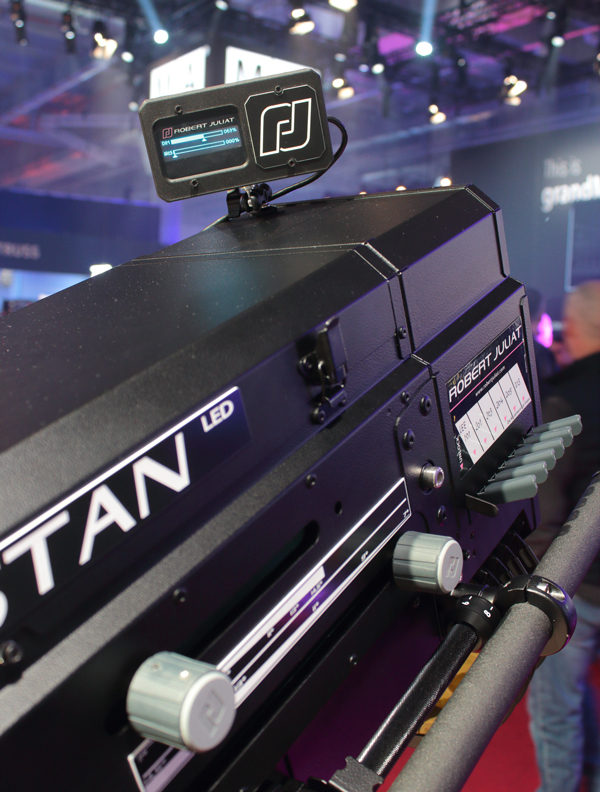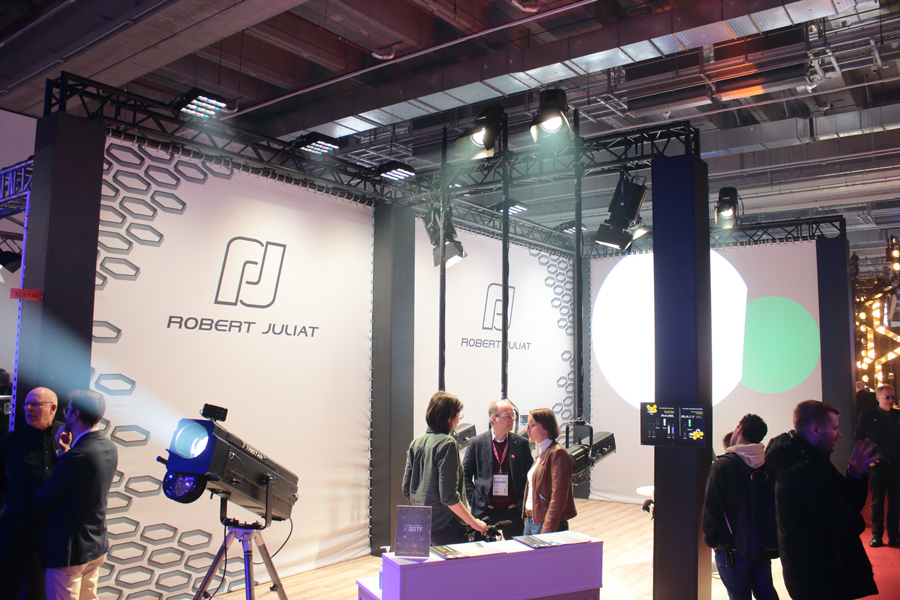The French manufacturer reveals for the first time its new LED Profile models called Ravel at the cutting edge of technology. They share the spotlight with Tristan, a “2.0” manual LED Follow Spot.
Ravel
Let’s first focus on Ravel, the new profile spot whose 450 W of LEDs challenge the halogen lamps of the 2 kW profiles. Aesthetically, it sports a brand-new, easily recognizable design with an octagonal section. Mechanically, its reinforced design differs from its brothers and sisters.
To ensure its rigidity and that of the elements it holds inside, the chassis is held by longitudinal members. As for improvements, we can say the ventilation, which is already very efficient on other products in the range, has been specially redesigned to be even more efficient and at the same time perfectly silent.

The LED source offers 450 W of white with variable color temperature (CRI greater than 90), a power which will remain fully available regardless of the colorimetry chosen to always offer optimal light intensity, no compromises are made on this point.
The profile offers three different optical units depending on the desired zoom range, 11/26°, 16/35° or 28/54°. It seems very important to note that the Ravels are fully compatible with the 600SX and 700SX series optics.

Concerning control, the manufacturer has emphasized compatibility and the available protocols offering DMX-RDM, Art-Net, and sACN but also advanced functionalities such as LLRP or even “Zero-configuration networking” or “zeroconf”, offering simple and direct access to the fixture via the network without the need for IP configuration.
This range of profiles replaces the Zep2 series, which has now been discontinued, and will soon be developed in Fresnel. The first units should be available in the last quarter of 2024.
Tristan

It’s Tristan’s turn, the latest development in the famous Robert Juliat Follow Spot family and proud replacement of the Victor. For comparison, for the same flow of 30,000 lumens, we go from 1,800 W of lamp to 800 W of LED, the energy saving is significant!
The dimensions of the body of the follow spot have been reduced by a good fifteen centimeters and the total weight lowered to 37 kg, power supply included (which is integrated into the body of the fixture).
Dans la liste des nouveautés, on remarque la volonté du fabricant de faciliter l’utilisation du projecteur via des solutions techniques automatisées, comme la gestion de l’iris qui devient motorisée, pouvant maintenant restituer des presets préalablement enregistrés sur une console lumière.

To do this, Tristan is also equipped with DMX-RDM, Art-Net, and sACN controls and offers the same network functionalities as the Ravel profiles. A small remote screen available as an accessory also allows the follow spot to have a direct view of its dimmer and iris values.
Just a quick word on the manual control of the beam reducer, the user interface of which takes the form of a bar-type rotary potentiometer with a very smooth feel, discreetly placed just behind the holding handles.
The light engine equipped with an 800 W LED is calibrated for white at 6000 Kelvins and a CRI greater than 90, the dimming of the source is ensured electronically. As for the zoom module, it will allow you to vary the angle of the beam between 7° and 14.5° (the same as on the Victor).
To obtain color, the Tristan retains its classic manual filter holders. Several accessories will be available such as traditional guillotines to cut the beam or even a gobo holder module.
For more information go to the Robert Juliat website








